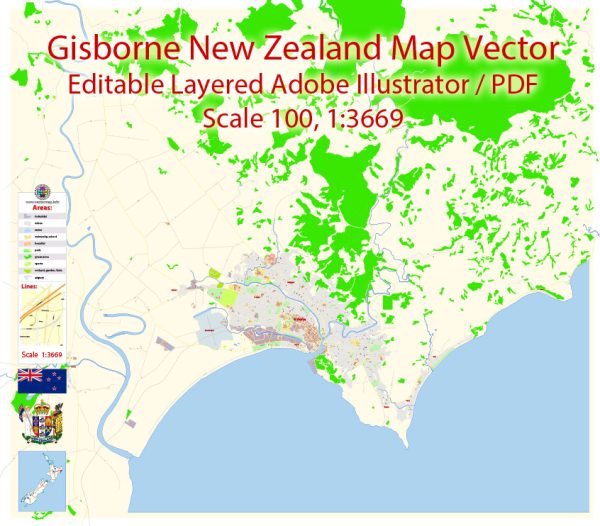Gisborne, a city located on the east coast of New Zealand’s North Island, is known for its stunning natural beauty, vibrant cultural scene, and unique socio-economic characteristics. Here’s a general socio-economic description of Gisborne:
- Economy: Gisborne’s economy has traditionally been driven by agriculture, forestry, and horticulture. The region is known for its vineyards, fruit orchards, and sheep farming. The forestry sector has also been significant, with timber production and wood processing contributing to the local economy.
- Employment: While agriculture and forestry play a crucial role in the local economy, Gisborne has faced challenges in terms of employment opportunities and income levels. It has experienced higher unemployment rates and lower average incomes compared to some other regions in New Zealand.
- Tourism: Gisborne is increasingly becoming a popular destination for tourists. The region’s beautiful beaches, wineries, Maori culture, and outdoor recreational activities have been attracting visitors. The growth of tourism has positively impacted the local economy and created employment opportunities in the hospitality and service sectors.
- Education: Gisborne has several educational institutions, including primary and secondary schools, as well as tertiary education providers. The Eastern Institute of Technology (EIT) has a campus in Gisborne, offering a range of courses.
- Healthcare: The city has healthcare facilities, including Gisborne Hospital, which serves the health needs of the local population.
- Culture and Arts: Gisborne is known for its vibrant arts and culture scene. The Tairawhiti Museum, various art galleries, and annual events like the Rhythm & Vines music festival contribute to the cultural richness of the region.
- Maori Culture: The Maori culture is an integral part of Gisborne’s identity. The city and the surrounding region have a significant Maori population, and their cultural heritage is celebrated through various events and activities.
- Transportation: Gisborne is connected to other parts of the North Island by road and has an airport with domestic flights. The road infrastructure is essential for the transportation of goods, especially in the primary industries.
- Social Challenges: Despite its natural beauty and cultural richness, Gisborne faces socio-economic challenges, including poverty, access to quality healthcare, and educational attainment. These issues have been the focus of local government and community organizations.
- Community and Lifestyle: Gisborne offers a more relaxed and rural lifestyle, attracting people who prefer a slower pace of life and a strong connection to nature and the outdoors.
It’s important to note that socio-economic conditions can change over time, and local initiatives, government policies, and economic factors can influence the dynamics of the region. For the most up-to-date and detailed information about the socio-economic conditions in Gisborne, it is advisable to consult local government reports, community organizations, and recent news sources.


 Author: Kirill Shrayber, Ph.D.
Author: Kirill Shrayber, Ph.D.